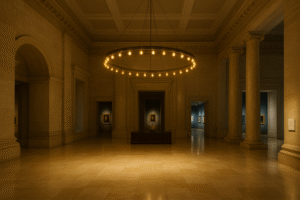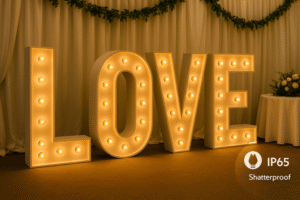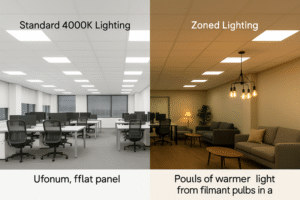Your outdoor lighting keeps failing. Rain, dust, and temperature changes ruin standard bulbs, costing you money and creating safety risks. Don't settle for unreliable lights in critical areas.
Yes, specially designed outdoor LEDs can endure extreme environments. They use durable materials, sealed housings with high IP ratings for water and dust protection, and components that operate reliably across wide temperature ranges, ensuring long-lasting performance.
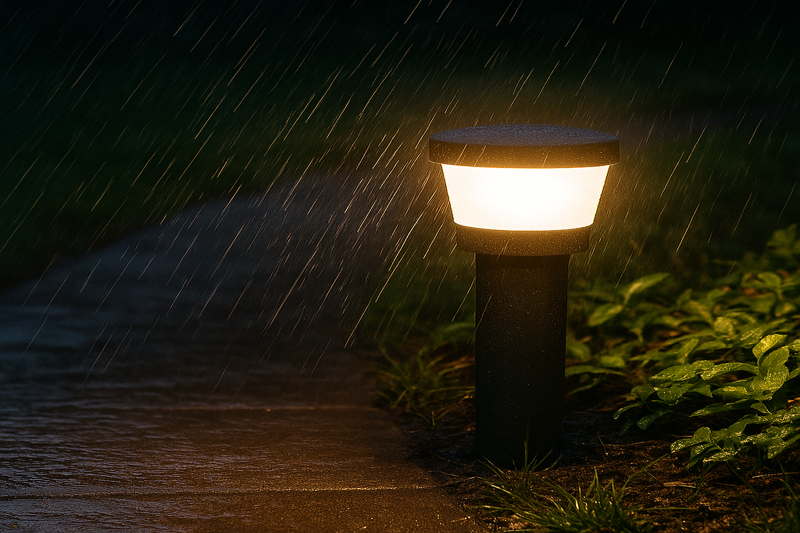
As a marketing manager at a leading LED manufacturer, I talk to B2B buyers like Jacky every day. A common pain point they share is the poor performance of standard lights when used outdoors. They face complaints about fixtures that flicker, rust, or just stop working after one bad season. This isn't just an inconvenience; it can damage a brand's reputation for quality. That's why we've focused on engineering solutions specifically for these challenges. Understanding what makes an LED truly robust is key to choosing a product that lasts. Let's explore the essential features that allow LED lighting to thrive in harsh conditions.
What Makes an LED Bulb Truly Weatherproof?
Are you worried about rain or dust damaging your outdoor fixtures? Standard indoor lights are not sealed, leaving them vulnerable to short circuits and failure when exposed to the elements.
A truly weatherproof LED is defined by its Ingress Protection (IP) rating. This two-digit code specifies its level of protection against solids (like dust) and liquids (like water), ensuring internal components remain safe and functional in any weather.
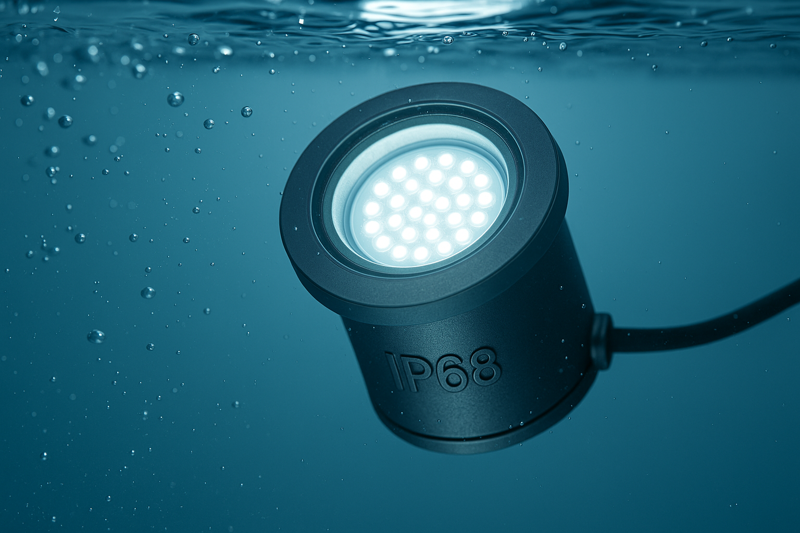
I often explain to clients that the IP rating is the first thing they should look for when sourcing outdoor lighting. It's a universal standard that removes all guesswork. For example, a product manager for a landscaping company needs to know if a ground light can withstand sprinklers or even temporary flooding. A light rated IP20 is fine for indoors but would fail immediately. A light rated IP65 can handle jets of water, while an IP68-rated light can be fully submerged. Providing products with the correct, certified IP rating builds trust and ensures the end-user has a reliable solution that is fit for purpose. It’s about selling the right tool for the job.
Understanding IP Ratings
The IP rating consists of two numbers. The first digit indicates protection against solid objects, and the second indicates protection against liquids. Higher numbers mean better protection.
- First Digit (Solids): Ranges from 0 (no protection) to 6 (completely dust-tight).
- Second Digit (Liquids): Ranges from 0 (no protection) to 8 (can be submerged in water continuously).
For outdoor applications, you should look for a minimum rating of IP441, which protects against splashing water. For more exposed areas, IP65 or higher is recommended.
Matching the IP Rating to the Environment
Choosing the right IP rating2 is critical for the longevity and safety of the installation. A mismatched rating leads to premature failure and potential hazards.
| IP Rating | Environment | Example Application |
|---|---|---|
| IP44 | Protected outdoor areas | Wall lights under an eave or on a covered porch. |
| IP54 | General outdoor use | Exposed wall lights, garden posts. |
| IP65/IP66 | Exposed to the elements | Ground-level floodlights, wall-washers, lights exposed to rain and sprinklers. |
| IP68 | Submersible | Underwater lights for pools and fountains, in-ground well lights in poorly drained areas. |
How Do LEDs Handle Extreme Hot and Cold Temperatures?
Do you live in a place with freezing winters or scorching summers? Extreme temperatures can make materials brittle or cause electronics to overheat, leading to fixtures that crack and lights that fail.
Robust LED solutions are built with materials resistant to thermal shock, often from -60°C to +90°C. They use powder-coated aluminum or high-performance resins and feature designs that efficiently dissipate heat, protecting the sensitive electronics inside from temperature swings.
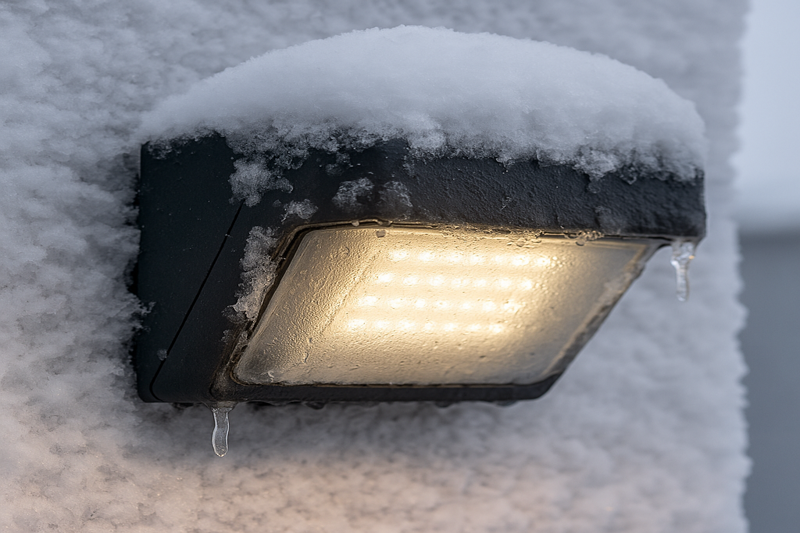
One of my biggest clients is a distributor in the Netherlands, where cold, damp winters are the norm. For years, they struggled with fixtures whose plastic housings would become brittle and crack in the cold. We introduced them to a line of our products made from high-performance resin, which is resistant to thermal shocks from -60° C all the way up to +90° C. This solved their problem completely. On the other side, a client in the southern US needed lights that could withstand intense summer heat without the electronics failing. For them, powder-coated aluminum bodies were the answer, as the metal acts as a heat sink. It proves that the material science behind a fixture is just as important as the LED chip inside.
Materials That Beat the Heat (and Cold)
The choice of materials is the most critical factor for temperature resistance. Not all plastics and metals are created equal, and for extreme environments, specialized options are necessary.
- High-Performance Resin3: This material is a standout for durability. It is not only resistant to a wide range of temperatures but is also immune to corrosion from atmospheric agents and even chemical fertilizers. Its colors are often UV-stabilized to prevent fading and degradation from sunlight.
- Powder-Coated Aluminum: Aluminum is excellent at dissipating heat, which is vital for protecting the LED driver and chip in hot climates. A powder-coated finish adds a durable layer of protection against corrosion and physical damage.
- 316 Stainless Steel4: For the most extreme applications, especially in coastal areas with salt spray, 316 stainless steel offers superior corrosion resistance and strength.
Design for Thermal Management
Beyond materials, the physical design of the fixture plays a key role in its survival in extreme temperatures.
| Design Feature | Benefit in Hot Climates | Benefit in Cold Climates |
|---|---|---|
| Heat Sinks | Fins and large metal surfaces draw heat away from the LED components, preventing overheating and extending lifespan. | While less critical, good thermal design ensures consistent performance during temperature transitions. |
| Sealed Gaskets | Prevents hot, humid air from entering the fixture and causing condensation or damage to electronics. | Prevents moisture from freezing inside the fixture, which could crack lenses or damage seals. |
| Impact-Resistant Diffusers | High-quality polycarbonate or tempered glass diffusers resist becoming brittle and cracking under intense UV exposure and heat. | Materials maintain their flexibility and strength, resisting impacts even when frozen. |
Are Outdoor LEDs Strong Enough for Public or High-Traffic Areas?
Are you concerned about vandalism or accidental damage to lights in public parks or driveways? Plastic fixtures can be easily broken, and fragile bulbs require constant replacement, leading to high maintenance costs.
Yes, many outdoor LEDs are specifically designed for high-impact environments. They are built with robust materials like 316 stainless steel and high-performance resin, and some are rated as walk-over or even drive-over up to 5000 kg, making them incredibly durable.
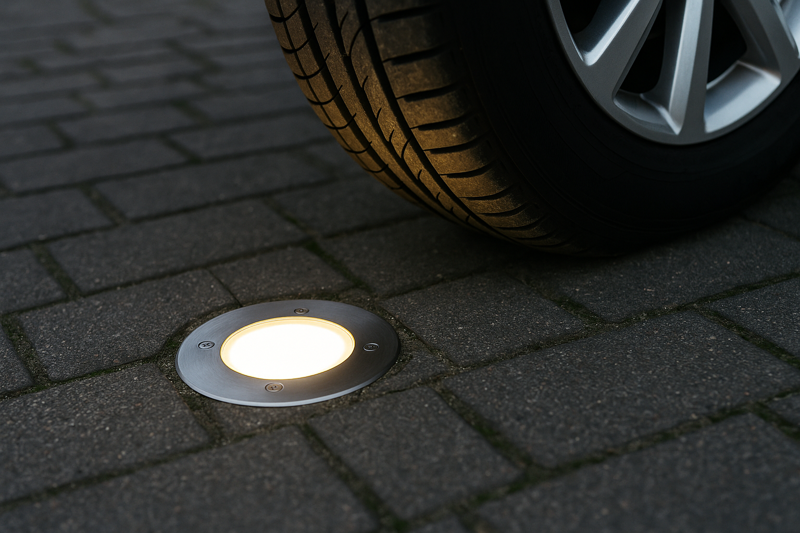
I once worked with a city planner who was specifying lighting for a new public square. His main concern was durability. The lights had to withstand everything from skateboards and foot traffic to service vehicles. We recommended our Cecilia in-ground lights, which are made from 316 stainless steel with a tempered glass diffuser and are rated as drive-over for up to 5000 kg. He was hesitant at first due to the higher initial cost, but I explained that the total cost of ownership would be far lower. He wouldn't be spending money on constant repairs and replacements. He installed them, and five years later, they are all still performing perfectly. This is the value of investing in fixtures that are truly built to last.
Key Features for Durability
When selecting lighting for high-traffic areas, specific features indicate a product's ability to resist physical impact. These go beyond standard weatherproofing.
- IK Rating5: The IK rating measures a fixture's resistance to mechanical impact on a scale from 00 to 10. For public areas, an IK rating of IK08 or higher is recommended.
- Drive-Over/Walk-Over Capability6: For in-ground lights in pathways and driveways, look for specific weight ratings. A "walk-over" rating is suitable for pedestrian areas, while a "drive-over" rating (e.g., up to 5000 kg) is necessary for vehicle traffic.
- Material Strength: The choice of housing material is crucial.
Comparing Materials for Physical Strength
| Material | Strengths | Ideal Applications |
|---|---|---|
| 316 Stainless Steel | Highest resistance to corrosion and physical impact. Premium look and feel. | Coastal areas, public squares, high-end architectural lighting. |
| Powder-Coated Aluminum | Strong and lightweight. Good impact resistance and heat dissipation. | Commercial building exteriors, parking lots, general landscape lighting. |
| High-Performance Resin | Extremely durable, immune to corrosion, and UV-stabilized. Resists chipping and cracking. | Parks, coastal properties, areas where chemical exposure (like fertilizers) is a concern. |
| Tempered Glass | Highly resistant to scratching, thermal shock, and direct impact. | Lenses and diffusers for in-ground lights and floodlights. |
Conclusion
Choosing the right LED solutions for outdoor and extreme environments is crucial. By considering IP ratings, temperature-resistant materials, and impact durability, you can ensure reliable, long-lasting performance for any project.
Exploring the specifics of IP44 can help you choose the right lighting for protected outdoor areas, enhancing safety and functionality. ↩
Understanding IP ratings is essential for selecting the right equipment for various environments, ensuring safety and longevity. ↩
Explore this link to understand how High-Performance Resin can enhance durability and temperature resistance in various applications. ↩
Discover why 316 Stainless Steel is the go-to choice for corrosion resistance and strength in harsh conditions. ↩
Understanding IK Rating helps you choose durable lighting for high-traffic areas, ensuring safety and longevity. ↩
Exploring this capability ensures you select the right lighting for pathways and driveways, enhancing safety and functionality. ↩





